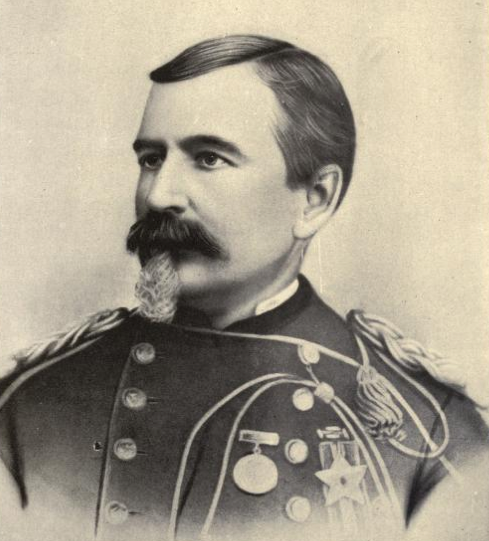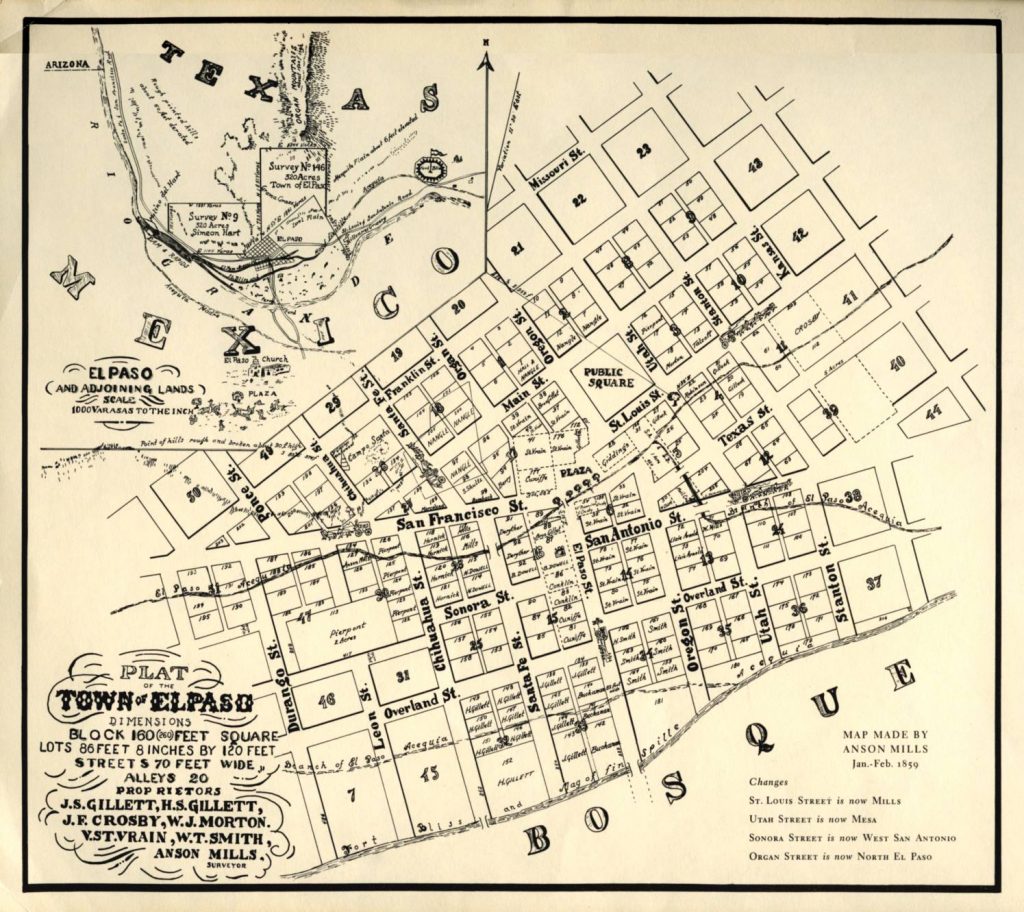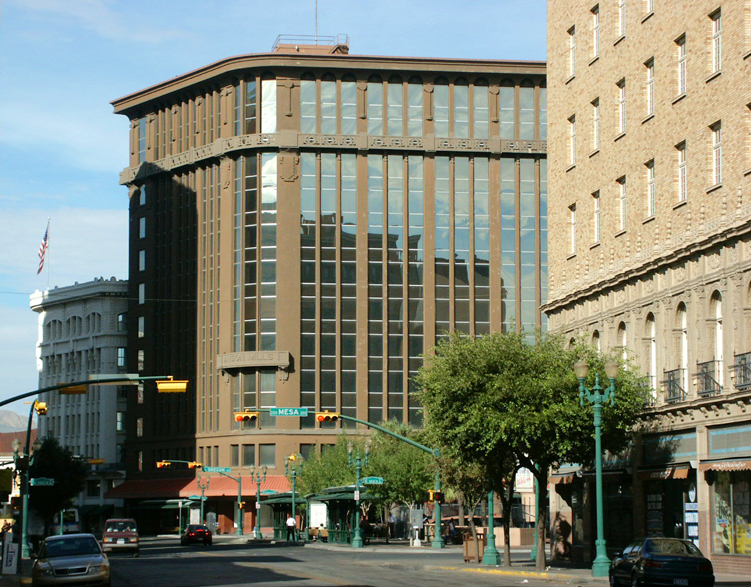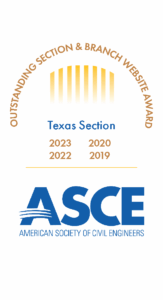The Father of El Paso: Story of Anson Mills
By Melinda Luna PE, Chair, History & Heritage Committee

Anson Mills was a partially-trained, self-taught engineer who made his mark on El Paso starting with the name of the town and continuing notably with the original layout of El Paso and the Anson Mills building. He had such an impact on the area that he was even nicknamed “The Father of El Paso.”
Mills first came to Texas after leaving the United States Military Academy at West Point in 1857. Mills grew up on a farm learning carpentry and weaving near Thorntown, Indiana in central Indiana. He had training in surveying and engineering but first worked as a teacher in McKinney, Texas before being hired by the El Paso Company to lay out the town of Franklin, Texas. He started surveying the town and laying it out in a grid pattern. On his map, he renamed the town El Paso and even named some of the roads after businesses serving El Paso. For example, Overland Street was named after the Butterfield Overland Mail Company.

Mills’ skills were in demand and, with connections he had made at West Point, he was hired by the Military to survey Fort Quitman, Fort Stockton, and Fort Bliss. He encouraged his brothers William and Emmett Mills to move to El Paso. Seeing the potential of the area, Mills bought land himself and started selling homesites. He started the first mule drawn streetcar company and was also hired by the Butterfield Overland Mail company to build a station and headquarters in El Paso. Likely influenced by fortunes made in the California Gold Rush happening at the time, Mills invested in a silver mining company in the Big Bend area that turned out to be very good investment.
When the Civil War started, Anson Mills, left to serve in the army, eventually reaching the rank of Brigadier General and winding up in St. Louis, Missouri. After the war, Mills began making his way back down to Texas. Trips to El Paso from St. Louis back then usually took 8 to 9 days. For Mills, the trip was 3 weeks because of Indian Raids, buffalo herds, and stolen horses. He eventually got the opportunity to make improvements to the trip.
Among his many innovations, Mills worked on a belt patent in December of 1880, and the design was adopted by the United States Army and Navy as well as the Canadian Military. In 1883, he worked on the Grand Central Hotel in El Paso. In 1885, according to the El Paso Times, the building was described as “the acme of luxury and comfort.” In 1892, it was destroyed by a fire.
Mills also studied the water resources in the El Paso area and lobbied to get a plan for an international reservoir. He was appointed to the International Water Boundary Commission in 1894 and served for 20 years.
In 1910, Mills started work with architect Henry C. Trost, of the Trost and Trost firm, on the Anson Mills Building, which still stands at the intersection of West Mills and North Oregon streets (303 N Oregon) in El Paso. The El Paso Herald carried news of the building’s construction. In August of 1910, the paper reported that the steel for the building was delayed due to a labor strike in Fort Worth. Mica mined in the county was used to finish the concrete. The building stands 12 stories and 145 feet tall. It was the first concrete monolithic building and the second concrete skyscraper in the United States. Trost is now considered a pioneer in reinforced concrete. The cost of the building was reported as over $300,000, which is 8.3 million dollars in 2020 dollars.

Anson Mills lived in Washington D.C. when he was not in El Paso. He retired there and wrote his autobiography, My Story, in 1918. His autobiography includes maps of his travels and work. He also has an account of the people he worked with and his family. Mills was buried in Arlington Cemetery in 1924.



